Making natural inks and dyes is all about playing around with colours. The process of taking plants and turning them into colour is wonderfully versatile, fun to work with, and is environmentally sound.
Natural Inks and Dyes to Colour Your World Happy
After a few experiments, you will discover that these mixes can be used to make subtle and refined colours, or something vivid and bold. Once you learn the basic techniques, the options are endless. In this article, I hope to expand your thinking about what is possible with natural dyes. They are more than just an antiquated way to colour re-enactment clothing. They can and should be a part of your eco-friendly wardrobe, your sustainable home textiles, and your fun. They are magical.
Making Natural Inks and Dyes
Years before synthetic dyes and pigments were available, simple but efficient inks were used in paintings from prehistoric civilizations. These natural colours could be mineral in origin or from plant extracts. The articles below will explore making natural ink with black walnut hulls.
How to Make Black Ink from Walnut Hulls for Writing, Painting, and Fabric Stamping
Walnuts are rich in both natural dye chromophores and tannins. Both English and Black Walnuts can be used for dyeing. So can other nuts in this family like butternuts and heart nuts, with slightly different shades of brown. All are rich in tannins and make a wonderful natural dye.
You use the green hulls that encase the nuts on the tree for the richest source of dye. Leaves, twigs, and walnut shells can also be used for natural dyeing but the richest browns come from dye baths made from the hulls.
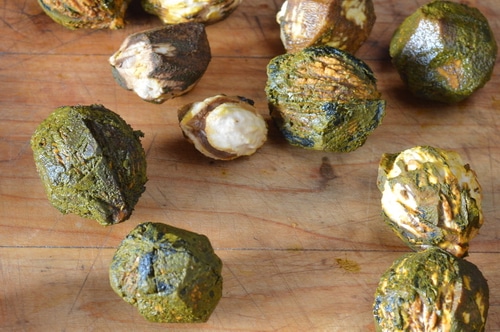
How to Make Ink from Natural Dyes
Making your own ink removes the toxic health risks of exposing yourself to fibre reactive dyes in commercial ink, as well as allowing you complete control over the manufacture and availability of your product. So start collecting your glass bottles and jars to hold your inks now.
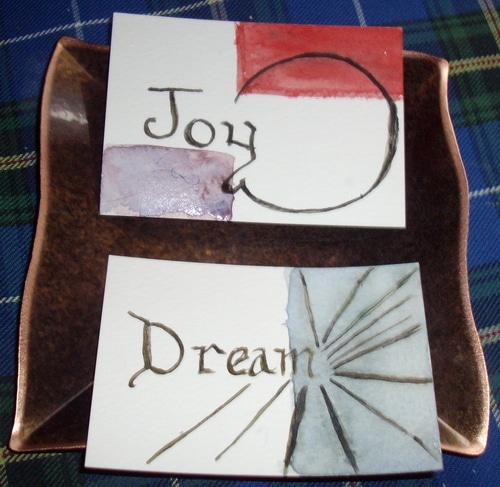
Those brown essential oil bottles, that were too good to toss when you used up the essential oil, make great bottles to store your homemade inks.

About Natural Inks and Dyes
Thousands of plants, roots, and insects can produce glorious colours. You’ll find them in the kitchen garden, the herb garden, a nearby field, and the forest. Natural dyeing is an eco-conscious, nontoxic way to access shades of colour unavailable with synthetic dyes.
Are They Safe?
Learn to use natural mordants in this article – Are natural dyes safe? Clearing up the confusion about chemical dyes and metal mordants. One of my friends said that she wasn’t going to learn to use natural dyes because of the heavy metal mordants that you have to use with them. My friend had heard that natural dyes were toxic and polluted the environment.
I saw a similar discussion about natural dyes on the website of a manufacturer of chemical dyes several years ago. What this manufacturer failed to reveal was that all dyes, both natural and chemical require some kind of metal or salt to make the dye permanent on the fabric.
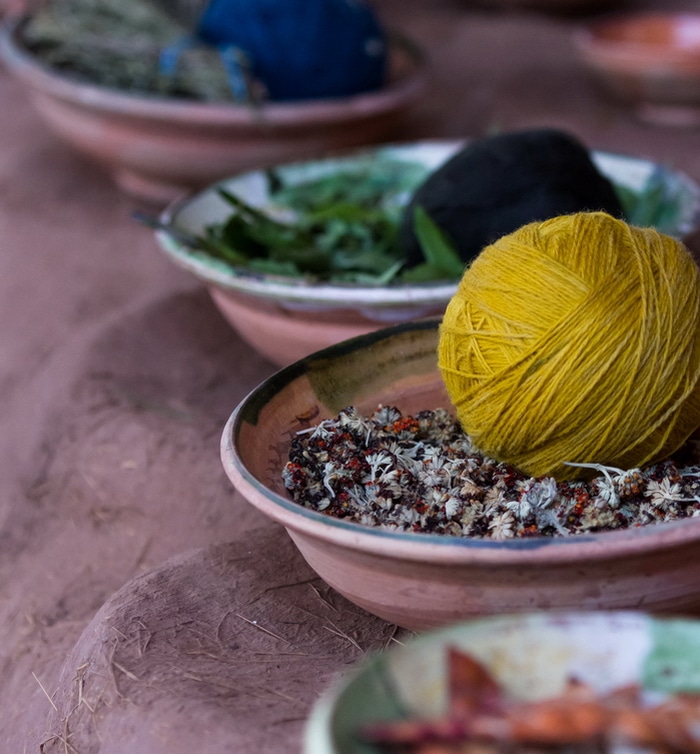
Growing Plants for Natural Dyes
The challenge of finding materials capable of producing lasting colors in the world around us has preoccupied humankind from prehistory to the present day. David Lee
Planting your Natural Dye Garden for a Full Palette of Natural Colors
A natural dye garden will give you eco-friendly, natural dye pigments for textiles, knitting yarns, soap making, and even artist paints and pastels and children’s art supplies. This year, put aside a portion of your garden, that you normally dedicate to flowers and herbs, to plant a rainbow of natural dye plants. Many common medicinal herbs are also traditional dye plants. Wean yourself from chemical colours and imported cookie-cutter fashion. And plan your wardrobe around nature’s palette.
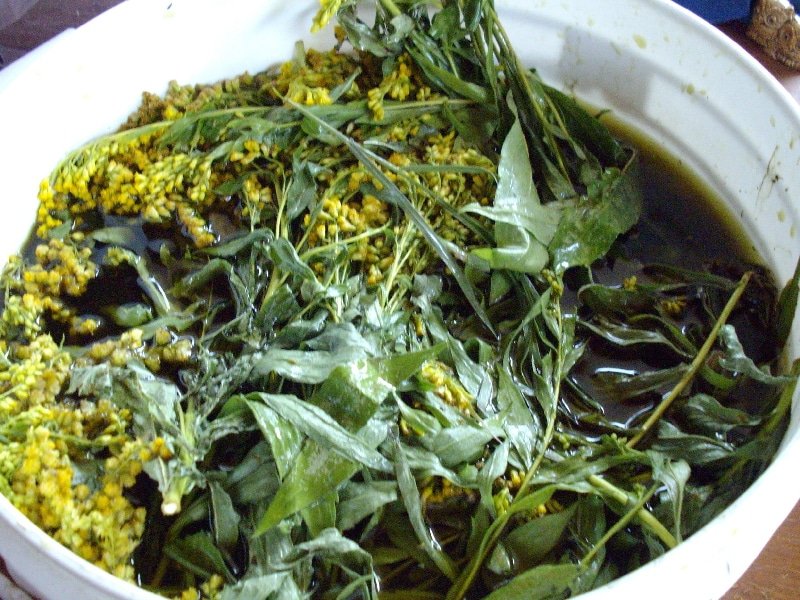
Seven Medicinal Herbs for the Natural Dye Garden
Growing your own food and medicinal herbs is a worthy use of garden space. But, what happens when you have limited garden space and want to add natural dye plants to the mix as well? One solution is to find plants that will pull double duty for your herbal medicine cabinet and your natural dye vat.
Make a rainbow with these 5 weeds (Natural Dyes)
There is a definite correlation between medicinal herbs and their natural dye gifts. The flavonoids of many weedy plants offer an abundance of active healing compounds as well as a plethora of colouring material. However, most of these flavones are generally pH sensitive and often lack colorfastness. Anyone who has tried to dye yarn with beet juice or red cabbage, understands the broken promises flavones offer. However, there are 5 weeds that you may find in your own neighbourhood, that offer the gift of vibrant colours AND colorfastness, and the gift is yours with a little coaxing and a small investment of your time.
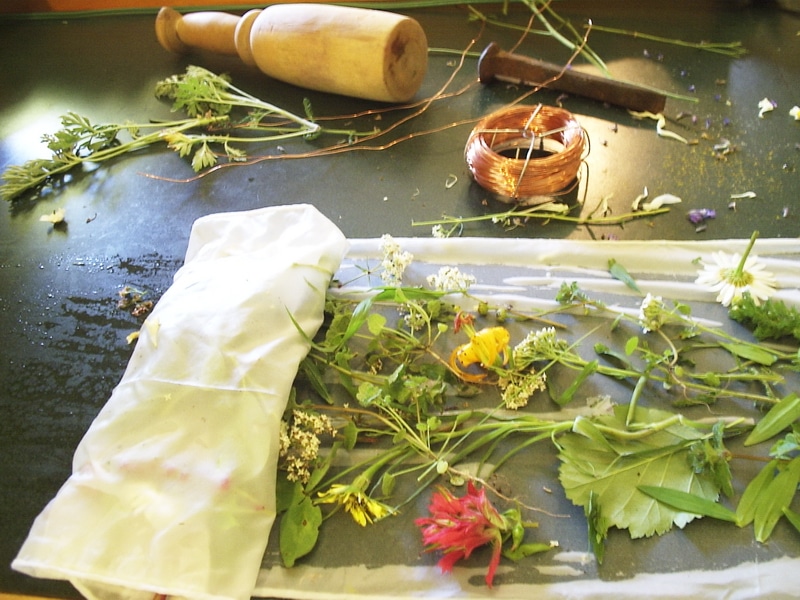
Hands on Dye Lessons
Natural dyeing is the most eco-friendly, low carbon footprint way to colour your wardrobe. When you use the plants you grow yourself you can create a local fibre shed that protects the environment and is sustainable and renewable. The first step in the process is mordanting your yarn with alum or other metal salts to make the natural dyes “bite” the natural fibres. Once the yarn or fabric is mordanted natural dye colours will adhere in a permanent, wash fast way to the fibres. Surprisingly, natural dye colours can be more enduring than chemical colours. Some have lasted hundreds of years.

Naturally dyed knitting yarns from Joybilee Farm
Walnut Dyed Yarns for a homestead wardrobe
In this article, I will show you how to dye yarns or fabrics with natural walnut dye, so that you can create a personal homestead wardrobe or enhance natural fibres that you have grown. I took the same walnut hulls that I used to make the walnut extracts for ink (see above) and added water to the pot again.
If you are allergic to nuts or have a family member who is, though, don’t do this in the house. If you personally are allergic to walnuts don’t do this at all! You can apply these same principles to other natural dyes.
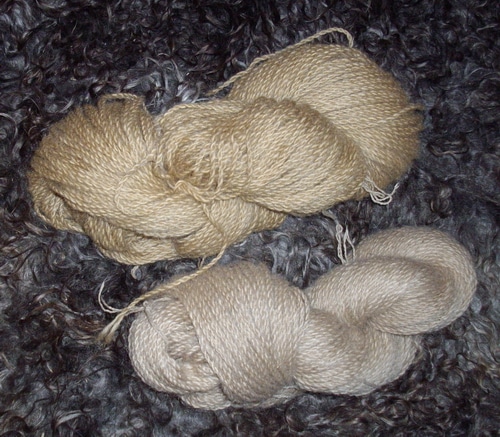
Silk and mohair yarns dyed with walnut hulls.
Woad is one of the best sources of blue natural dyes in temperate zones. Woad, a plant in the cabbage family, is a strongly medicinal plant that is also a strong source of indigo flavonoids used in textile dyeing.
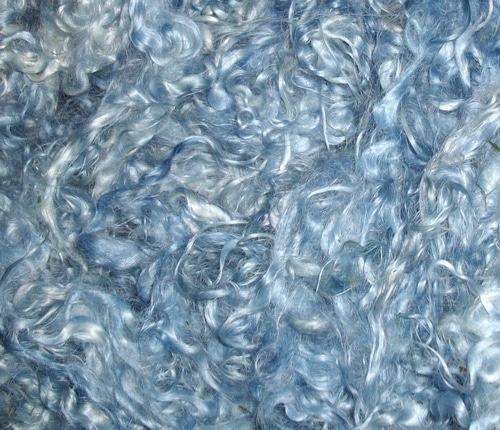
Mohair locks — dyed with woad
Natural pigments are not just limited to fabric dyes. Inks, paints, and even crayons can be coloured with natural pigments to make the artwork more sustainable and nontoxic. In my book, The Beeswax Workshop, I share several formulas for creating naturally dyed art supplies like pastels, crayons, and paints.
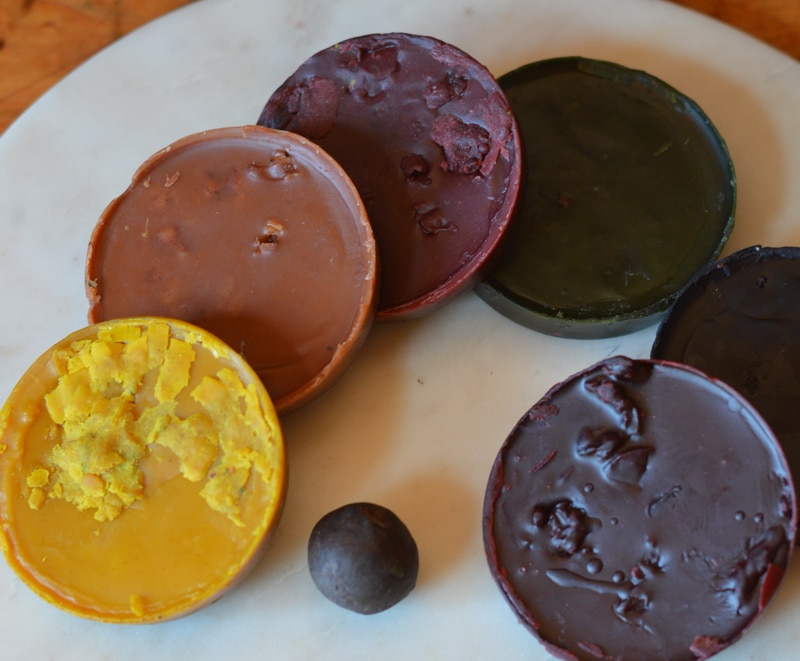
Eco-Print your fabric directly with natural dyes
Natural dye chromophores: flavonoids, anthocyanins, and quinones are inherent in almost all plant material if you know how to coax it onto your fabric. You don’t actually need to extract the dye and create a dye bath to grab the colour from plants. India Flint in her book, Eco Color: Botanical Dyes for Beautiful Textiles wrote about the technique of directly transferring colour from plant material. Others like Suzanne Deker make botanical prints to capture the essence of a place and a season.
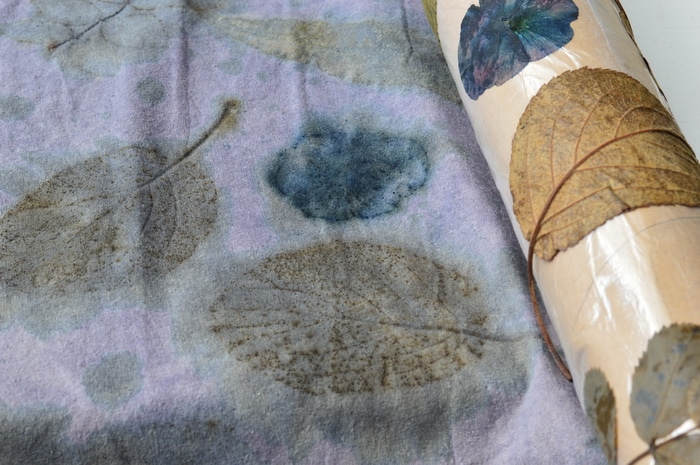
You can use the eco-print natural dye techniques to quickly create natural dye fabrics for scarves or for clothing for a beautiful one of a kind gift that captures the essence of the season and locale. Imagine capturing a summer at the lake on a cloth to wear as a beautiful accessory all winter long. With eco-printing and natural dyes, you can easily do this.
My challenge to you:
Take one piece of clothing, maybe a scarf, a shirt, or a jacket that needs an update, and instead of tossing it into the donation box, dye it with natural dyes or eco-print it to give it a new look and a fresh perspective. You will love the creative DIY process and the eco-friendly results. Apply the 3 Rs to your wardrobe (NOT reading, writing, and arithmetic! Reduce, Reuse, Recycle!) and get a fresh look while learning a new skill.
I’d love to see what you come up with. Post a picture on your Instagram account using the hashtag #DIYDyeChallenge so we can all see your art.


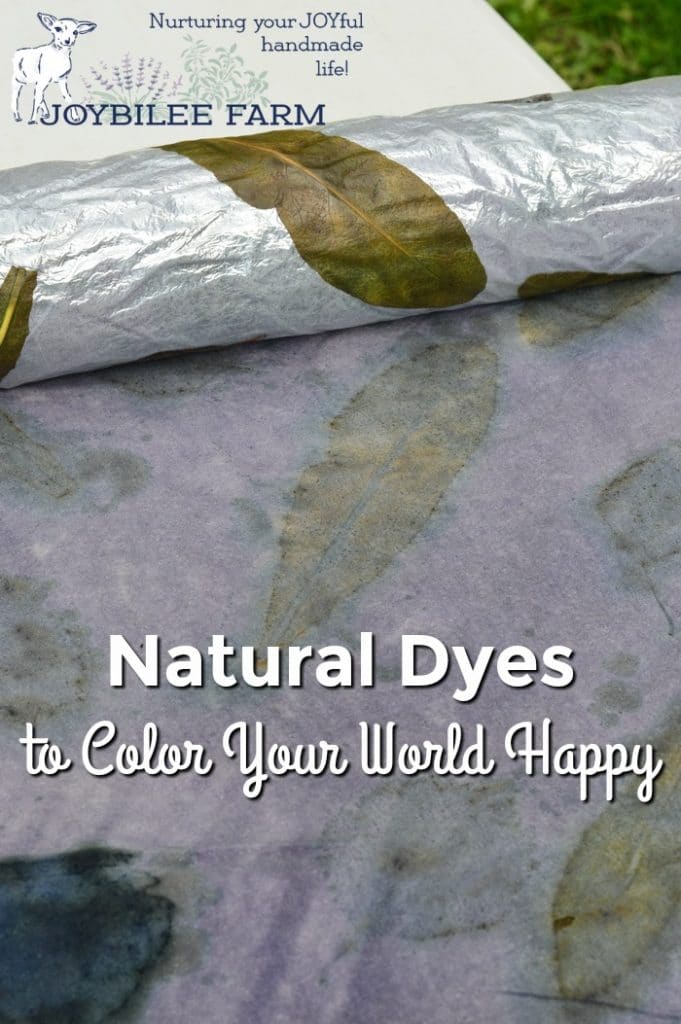
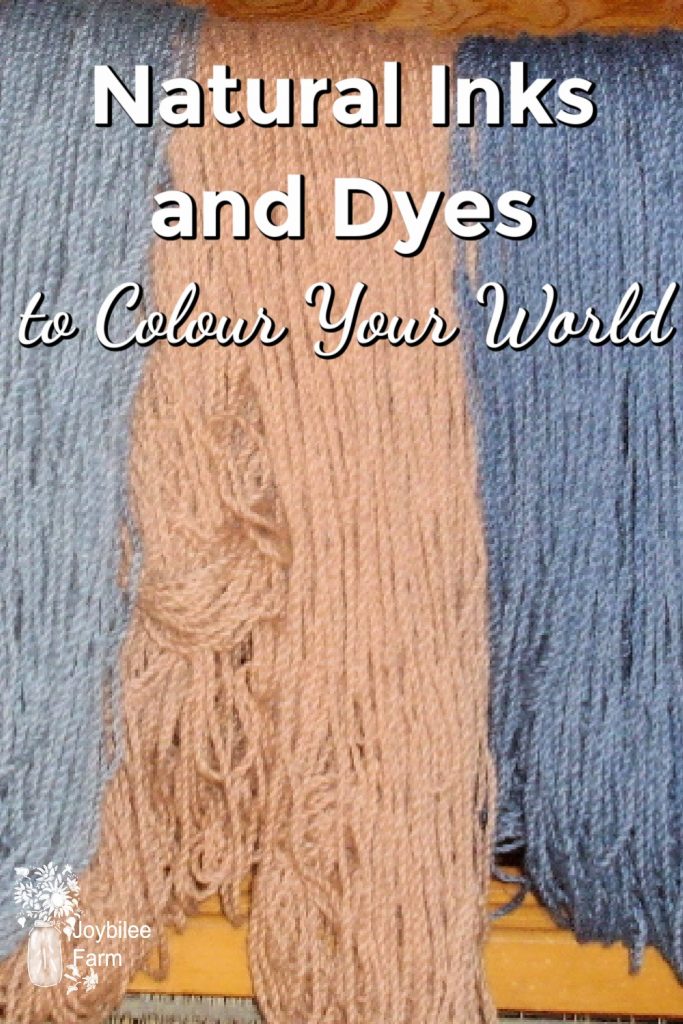

Leave a Reply